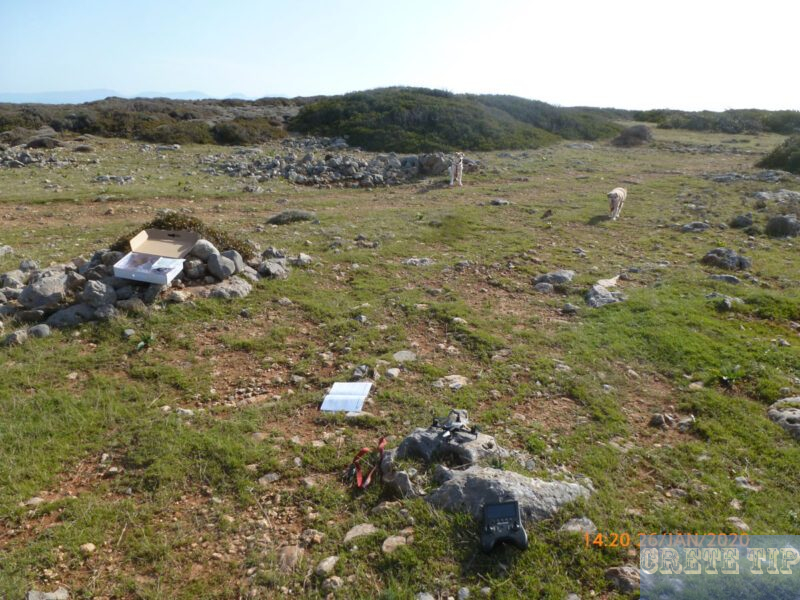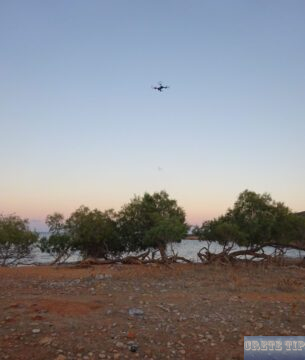Flying with the drone in Crete.
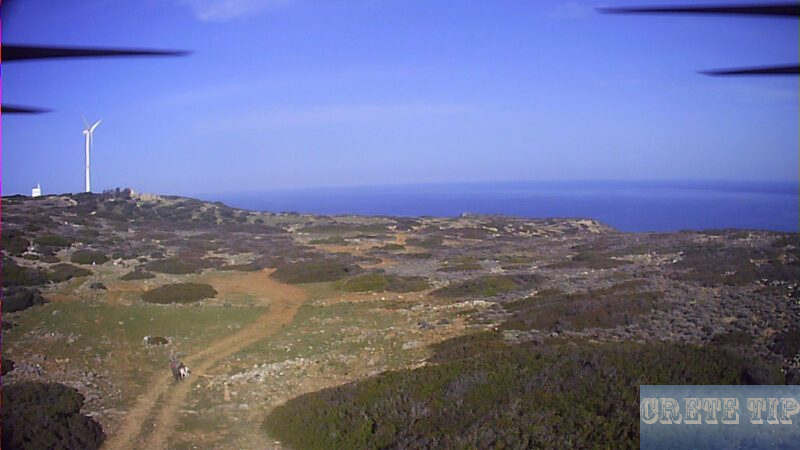
With a drone, you can take beautiful aerial photos on Crete. However, there are a few things you have to consider in order to avoid trouble with the Greek authorities.
In addition, it is often very windy on the island, especially in summer. Strong winds that can last for weeks practically without interruption and thus make flying with a drone impossible for a longer period of time.
I focus here on the ‘open class’ (‘Open’) and subcategory ‘A1’, as well as the drone class ‘C0’.
Currently, the first drones with EU certification are already available in the classes ‘C0’ to ‘C4’ (see following offers). All drones up to 250 grams take-off weight, which have been or will be brought onto the market by January 1, 2024, fall into the ‘open class’ with subcategory ‘A1’ and are most common, as only insurance and registration are required, but no EU drone licence etc.
The author currently uses the following drone with this accessory and expressly recommends it:
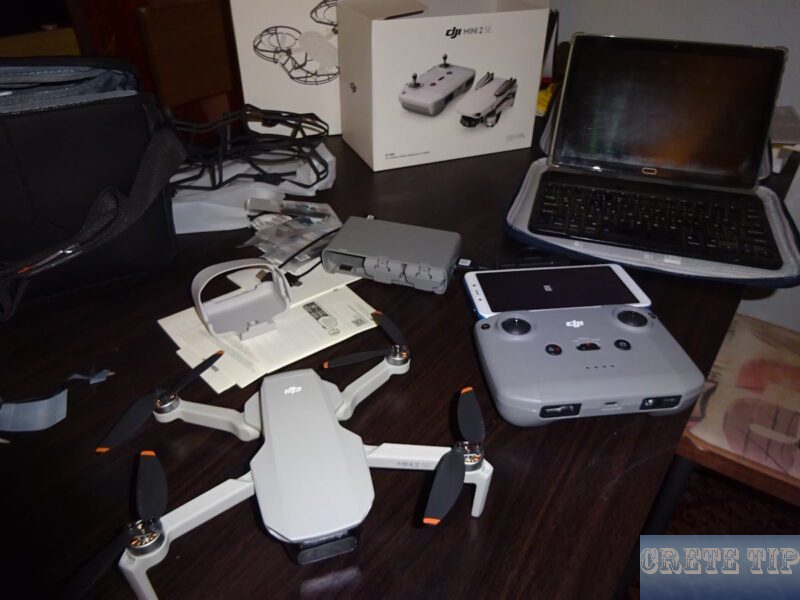
Overview of drone regulation in Greece
The EU Drone Regulation came into force in Greece on 31 December 2020. This has largely harmonized the rules for drone pilots in the European Union.
Therefore, one only has to register as an operator in one EU country and the EU drone licence is also recognized across countries. As a rule, registration should take place in the country where the drone is flown for the first time.
Registration in Greece is done using Taxis-NET, the local online tax administration. It must also be renewed annually, along with a small fee (about €20).
Registration in Greece is therefore only possible if you have a Greek tax number with a Taxis-NET password, which is usually only available to EU citizens who live here permanently and have tax obligations.
Current update: Drone Operator Charged with Arson in East Attica Blaze
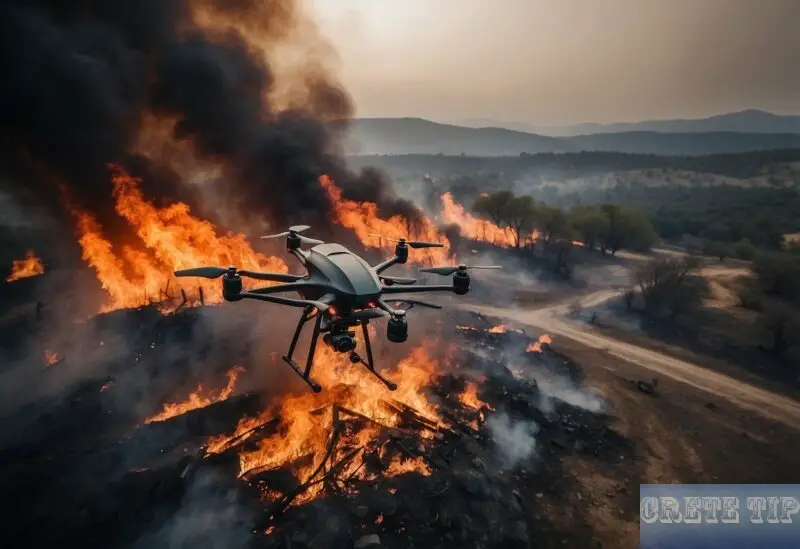
Early July, Greek authorities charged a 35-year-old man with unintended arson connected to a wildfire in Glyka Nera, East Attica. The fire, which started the day before, was allegedly caused by a drone crash.
The man is among four suspects arrested by police. The incident, classified as a misdemeanour, was aggravated due to the fire spreading across a large area. As a result, the suspect received an administrative fine of 4,675 euros.
The case underscores the serious consequences of negligence leading to wildfires, impacting the community and requiring significant firefighter efforts to control the spread and damage.
Frequently Asked Questions
What are the legal consequences for operating a drone that causes a fire?
If a drone operator’s actions result in a fire, they could face severe legal consequences. These might include fines, imprisonment, or both, depending on the extent of the damage and whether there was negligence involved. For instance, a drone operator in East Attica has been charged with arson after a wildfire started due to their drone activity.
How does the law address drone-related arson cases?
The law treats drone-related arson seriously, especially when large-scale fires occur. Drone operators may be prosecuted under arson statutes if their devices cause fires. Legal provisions could include penalties for negligence and additional punishments if it’s proven that the fire was caused intentionally or recklessly.
What are the responsibilities of drone operators during high-risk fire season periods?
During high-risk fire seasons, drone operators have a duty to be extra cautious. This includes adhering to all local regulations regarding drone use, avoiding fire-sensitive areas, and ensuring that their actions do not pose a fire hazard. Compliance with these rules is crucial to prevent incidents like the recent wildfire in Glyka Nera.
Could a drone operator face criminal charges if their device unintentionally starts a fire?
Yes, a drone operator can face criminal charges if their device unintentionally starts a fire. The severity of these charges usually depends on the circumstances, such as whether the operator was negligent. For example, the operator involved in the recent East Attica fire has been charged with arson by negligence.
What safety protocols should drone operators follow to prevent fire hazards?
To minimise fire risks, drone operators should follow several safety protocols:
- Avoid flying drones in areas with dry vegetation.
- Ensure the drone is in good working condition.
- Keep abreast of fire risk alerts and restrictions imposed by local authorities.
- Educate oneself on safe drone operating practices during high-risk periods.
Are there any recent changes to drone regulation laws due to incidents of arson?
In response to incidents of arson, there have been recent changes to drone regulation laws. These changes aim to tighten controls and increase penalties for violations. For instance, local authorities may introduce new rules limiting drone activities in high-risk areas and periods to prevent situations like the wildfire in East Attica.
Registration as a drone pilot
Registration is mandatory for all drone operators, unless the drone weighs less than 250 grams and is not equipped with sensors to collect personal data, such as a camera or microphone. Drones that fall under the EU Toys Directive are also exempt – but as far as I know, there is no model approved for this yet.
Registration is recognized in all countries that have also introduced the EU Drone Regulation.
Marking
All drones must be clearly marked with the individual registration number (e-ID). If available, the number must also be loaded into the drone’s remote identification system.
Drone licence
Depending on the category (not C0), drone operators must pass exams to obtain the EU drone licence. These are recognized in all countries that have also introduced the EU Drone Regulation.
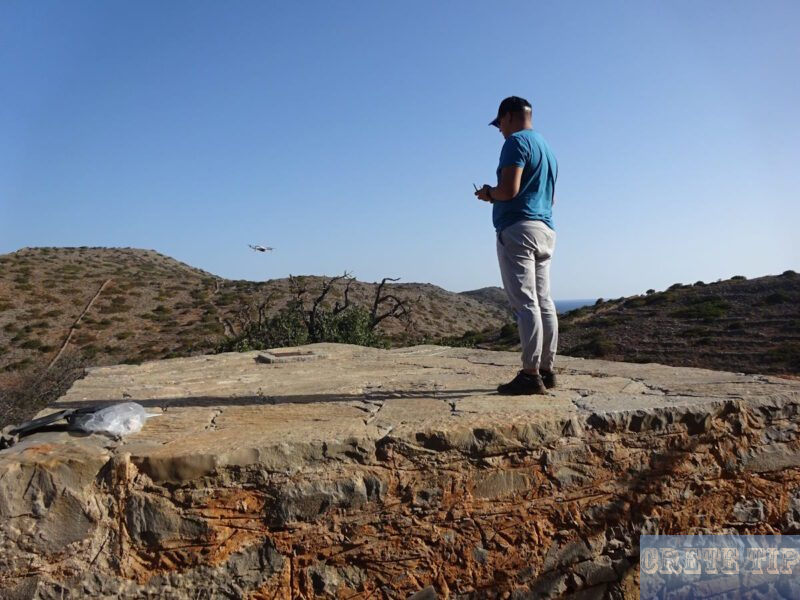
Differentiation according to categories
There is the ‘Open Category’ (with three subcategories A1 to A3), ‘Special Category’ and the ‘Certified Category’. There is no distinction between private and commercial pilots.
Maximum flight altitude
120 metres in uncontrolled airspace in the ‘Open’ category.
A distance of 8 kilometres must be kept from airports and there are also large areas of ‘controlled airspace’ around the airports in Crete, which may only be used by drones after prior registration.
In addition, the privacy of individuals and property owners must always be respected.

National specifics in Greece
Each EU country can determine certain aspects of its own drone regulations. For Greece, the following requirements apply in addition to the European regulations:
Is drone insurance mandatory?
Yes, for private flights with drones weighing 4 kg or more and for commercial flights with all weight classes. No, for the usual light drones (up to 250 grams), provided they are not used commercially.
Minimum age for drone pilots:
16 years
You must take out insurance for your drone in Greece if it is used for business purposes or also for private purposes if it weighs 4 kg or more. If possible, you should also take a translated version (at least in English) of the insurance certificate with you to Greece, which will be helpful when entering the country or being inspected.
Although the same EU rules apply in many countries, there are sometimes additional requirements that need to be met.
For example, in Greece you need to apply for a permit if you want to use the ‘controlled airspace’ (outlined in blue on the map).
This form must be completed and sent to the e-mail address [email protected].
Safety distances and flight bans in Greece
A distance of 8 kilometres must be kept from airports. This means that you cannot fly on almost all Greek islands that have an airport, except for Crete, as many of the other islands are quite small. Exceptions are possible with written permission from the Greek Aviation Authority.
Flying is banned over military installations, hospitals, prisons and other government facilities. In addition, you are not allowed to operate a drone over crowds, populated areas, car parks and roads. The no-fly zones can be determined using the free app Drone Aware – GR.
Property owners (this also applies to hotels) must agree to a launch on their property and personal rights must be respected. Flights in nature reserves are only possible with prior permission. For flights over or even near archaeological sites and excavation sites, permission must be obtained from the Ministry of Culture.
The drone regulations for Greece listed here have been researched to the best of our knowledge. However, no guarantee can be given for the accuracy of the information.
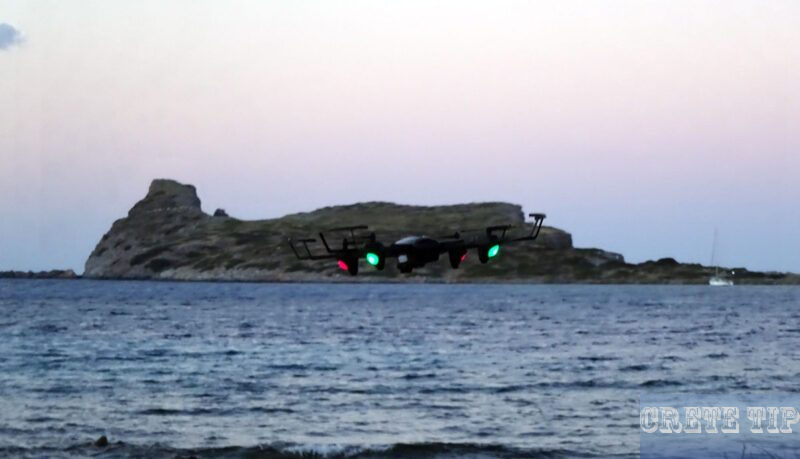
FAQ list for drone flying in Greece
In Greek, here is a detailed FAQ list on drone flying in Greece, from which the most important information for private flight of drones of the ‘open category’ is summarized and translated below:
Can I fly my drone wherever I want? (Question 6)
Greece, like every EASA member state, has defined geographical drone zones, which are areas where drones are not allowed to fly (e.g. national parks, city centres or near airports) or can only be flown under certain conditions or with a flying licence. The geographical zones apply to all categories of drones.
These no-fly zones can be found here !
Please note that you are not allowed to fly a drone near or in an area where there is an ongoing emergency situation!
Can I fly my drone over people? (Question 7)
In the ‘Open’ category, uninvolved persons may not be flown over, unless you have a privately operated drone weighing less than 250 grams or a market-purchased drone with a ‘Class Identification Label’ (CE) of 0 (i.e. up to 250 grams) or 1. In any case, you should try to minimize the time you fly over people.
Who is an ‘uninvolved person’ in a drone flight? (Question 8)
An uninvolved person is a person who does not participate in the operation with the drone or is unaware of the instructions and safety precautions of the drone being operated. Involved is the person who participates in the activity, understands the risk and is able to control the position of the flying drone.
To be considered ‘involved’, a person must therefore:
– give explicit consent to participate in the activity (e.g. consent for the drone to fly over them);
– receive instructions and safety precautions from the drone operator to be used in an emergency,
– and not be engaged in other activities to be able to check the position of the drone and take action to avoid collision with the drone in the event of an incident.
Examples of uninvolved persons: Spectators gathered for sporting activities, concerts or other mass events, people on the beach or in a park or on the street.
What is considered a ‘gathering of people’ in a drone activity? (Question 9)
If a group of people is so dense that the ability of those gathered to escape or move away unhindered is restricted, then we have a crowd.
Examples of crowds:
– sporting, cultural, religious or political events,
– crowded beaches or parks on a sunny day,
– shopping streets during shop opening hours,
– ski resorts, ski slopes, cable cars.
How high can I fly my drone? (Question 10)
If you are operating in a hilly environment, you must keep the drone at a distance of 120 m from the nearest point of the ground. This means that there may be conditions such as on a hill where even if you keep your drone 120 m from the side of the hill, you are actually flying more than 120 m above the valley floor. So as long as you keep your drone within 120 m of the side of the hill, your flight is legal.
Is there a minimum age for flying a drone? (Question 11)
The minimum age for drone operators, who must also be registered in the information system, is 16 years in the ‘Open’ and ‘Special’ categories. However, there is no minimum age to fly a drone marked C0 (toy) in subcategory A1.
Do I need insurance if I fly a drone? (Question 12)
Liability insurance in Greece is only required for those drones that are used either for business purposes or for private use with a take-off weight of 4 kg or more.
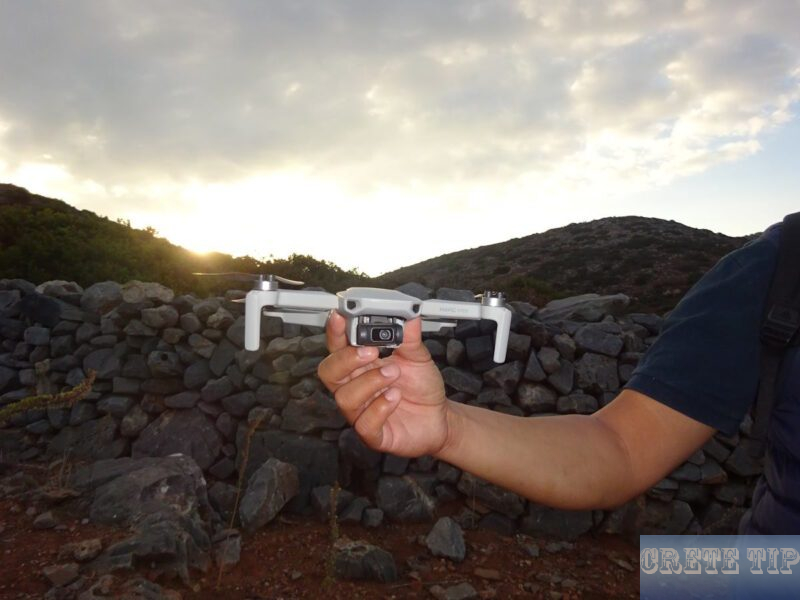
When does my drone belong to the open category? (Question 13)
If
– it bears one of the CE markings 0, 1, 2, 3 or 4,
– or is privately manufactured and weighs less than 25 kg, or
– purchased before 1 January 2023 and does not bear a class identification (CE) label,
– is not used directly over people unless it is lighter than 250 g,
– is kept within visual line of sight (VLOS) or the remote operator receives visual assistance from a UA observer,
– flies at an altitude of no more than 120 metres,
– does not carry hazardous materials and does not drop materials in flight.
How do I determine the open subclass in which I fly my drone? (Question 14)
The open subcategory is determined by
– the Class (CE) label (0, 1, 2, 3 or 4) affixed to the drone by the manufacturer,
– or the weight of the drone if it is privately built or does not carry a CE (Class Identification) label (for drones purchased before 1 January 2023).
What are the requirements in the subcategories of the open (‘OPEN’) category? (Question 15)
Drones can be used in operating conditions depending on which open subcategory they belong to, as described below:
CE marked category 0 drones or privately built drones weighing up to 250 grams can be flown in subcategory A1, i.e. almost everywhere except over crowds or areas where air traffic does not allow it (see DAGR map).
Drones with category marking (CE) 1 may also be used in subcategory A1, but flights over uninvolved persons must be minimised.
Drones with category marking (CE) 2 may be used in subcategory A2 , i.e. in urban environments. However, the drone must be kept at a safe distance from uninvolved persons. The minimum distance must correspond to the height at which the drone is flying (e.g. if you are flying at a height of 30 meters, make sure that the nearest uninvolved person is at least 30 meters away from where the drone could fall vertically out of the air).
Drones that carry a class 3 or 4 CE mark or are privately manufactured and weigh up to 25 kg may be used in subcategory A3 . This means that they can never be used in an urban environment and you must keep the drone at least 150 meters away from residential, commercial or industrial areas. In any case, you must avoid flying in areas where air traffic is prohibited (see DAGR map).
Do all operators need to be trained to fly a drone? (Question 16)
Yes, generally they should have training appropriate to the category of drone they will be using.
Only if they are very light drones do you not need to train:
– If the drone has a class 0 CE mark (under 250 grams, e.g. DJI Mini 2, DJI Mini 3, DJI Mini SE, DJI Mavic Mini, FIMI X8 Mini Pro, DJI Ryze Tello), you only need to know the manufacturer’s instructions.
– If the drone is privately built and weighs less than 250g, you do not need to complete training.
In the open category, all other operators flying in subcategories A1, A2 and A3 must:
– Familiarise themselves with the manufacturer’s instruction manual
– complete an online training course
– Successfully complete the online knowledge test (40 multiple choice questions).
Once the above process has been completed, the CAA will issue the ‘E-Learning Certificate of Completion’. This allows you to fly in the A1 and A3 subcategories.
The CAA is responsible for issuing these certificates. All remote operator certificates are valid for five years. If reissued before the certificate expires, the remote operator may attend a refresher course or take a theoretical knowledge examination as per the above. If the reissue takes place after the expiry of the certificate, he repeats the whole process of his certification from the beginning.
Are drone operator certificates valid for the whole of Europe? (Question 18)
Yes, they are valid for all EASA member states. The regulations allow operators to choose the course that conducts their training and testing and issues their certificates.
Do I need to get a permit or licence before I can fly my drone in the open category? (Question 19)
No prior permission is required to fly in the open category. However, please follow the DAGR chart closely to fly under open category operating conditions, but only in approved areas.
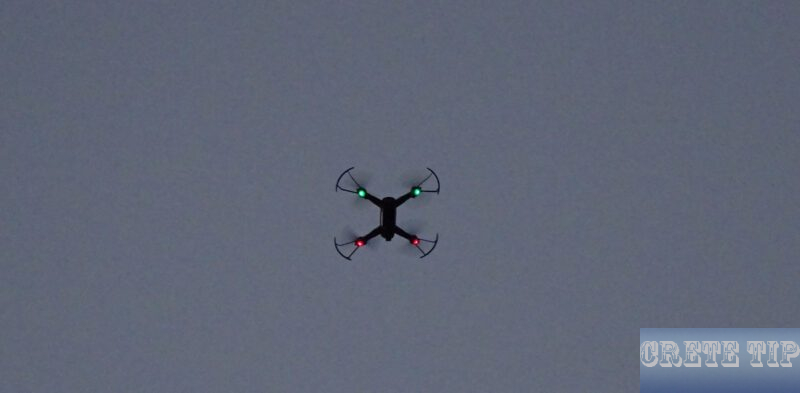
What are my obligations as a drone operator in the open category? (Question 20)
As an open category drone operator, you must:
– Ensure that the drone displays the registration number of the drone being operated (e.g. on a sticker) and that the same number has been transmitted to the drone’s remote identification system (if any).
– define the operating procedure (written procedures are required if the drone owner uses more than one operator, otherwise it is sufficient for the operator to follow the procedures specified by the manufacturer in the user manual).
– Ensure that the operator and personnel supporting the operation of the drone are familiar with the user manual and have the appropriate knowledge and certification for the drone category.
– Ensure that persons involved in drone operation are aware of the risks associated with use in the subcategories they operate.
Failure to comply with the responsible person’s obligations will result in fines and other administrative penalties.
What are my responsibilities when flying a drone in the open category? (Question 21)
As a remote operator in the open category you should:
Before flying:
– Have completed the training and examination required for the type of operation they will be undertaking.
– Have the most up to date information on all geographical no-fly zones published by the CAA.
– check for obstructions and for the presence of persons not involved in the operation of the drone (unless you are operating a self-built drone in subcategory A1 or a Category 0 CE marked drone).
– check that the drone is suitable for flight and the function for which it is intended.
– Ensure that the remote control is functioning properly (if fitted); and
– Ensure that the weight of the drone is within the category or sub-category limit of the intended use.
When flying in open class, you must observe:
– Do not operate the drone if you are unfit due to the use of hallucinogenic substances or alcohol, or due to illness.
– Keep the drone at a distance so that you can see it clearly. You can use a UA observer to monitor the airspace if you want to fly in first-person (FPV) mode. Observers should be close to you so that they can communicate with you immediately if they see an obstacle and give you instructions, e.g. for landing the drone immediately.
– If you or the observer see a manned aircraft, you must give it priority and ensure that the drone is away from it. If you have any doubts about the operation, you should land the drone immediately.
– Comply with the geographical zone restriction.
– Operate the drone in accordance with the manufacturer’s operating instructions.
– comply with the drone operator’s procedures.
– Do not operate the drone if an emergency situation is in progress.
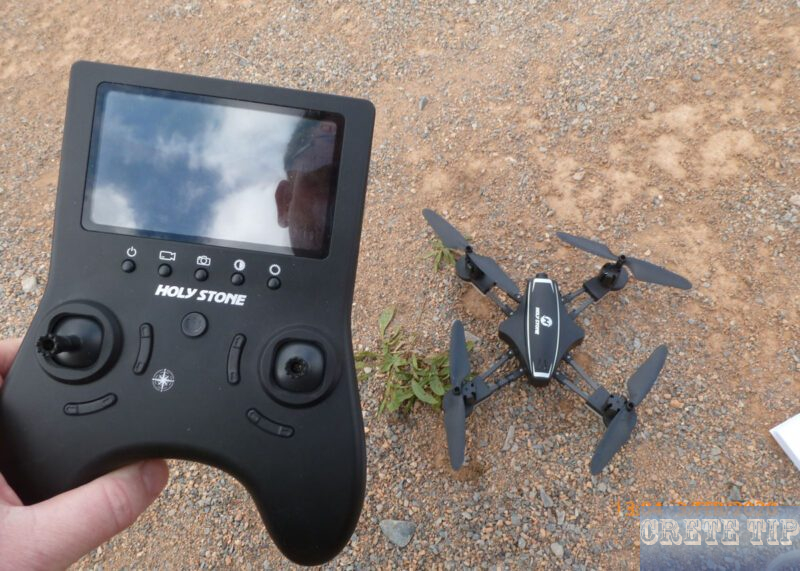
Can I fly my old drone in the ‘open’ class after 31.12.2020 without a class licence plate? (Question 22)
Yes, from 31 December 2020 to 1 January 2023, you can fly your drone without a class mark (CE) in the open category subject to the following conditions:
– Drones with a maximum take-off weight (MTOM) of less than 500 g must not be flown over people and the operator must complete training equivalent to that of a subcategory A1 operator.
– Drones with an MTOM of less than 2 kg may be flown 50 m or more (horizontally) away from people and the operator should receive training equivalent to that of a subcategory A2 operator
– Drones with an MTOM of less than 25 kg can be flown in deserted areas, at a distance of 150 m or more from private areas, and the operator should receive training equivalent to that of a subcategory A3 operator.
After 1 January 2023, you will be able to fly your drone without a Class Marking (CE), but only in the following sub-classes of operation:
– A1, if the maximum take-off mass (MTOM) of the drone is less than 250 g; or
– A3, if the MTOM of the drone is less than 25 kg.
Does the drone I built fall into the open category? (Question 24)
Yes, the homemade drone works in the open or special category. In the open category, it can be used in the subcategories:
– A1, if the take-off weight is less than 250 g.
– A3, if the take-off weight is less than 25 kg.
I am a non-EU citizen visiting Europe and intend to fly my drone in the open category. Do I need to register? (Question 25)
As a non-EU citizen, you must register in the first EU country where you intend to use your drone.
You will then be issued with an Operator Registration Number, which must be displayed on a sticker on all drones you own. You will also need to upload the ‘Operator Registration Number’ to your drone’s ‘Remote Identification System’, if available.
As a non-EU citizen, will my skills as a drone operator be recognised for the open category in the EU? (Question 26)
As there is still no mutual recognition between EASA and third countries in the field of drones, training or qualifications obtained in your country of residence are not recognised in the EU.
